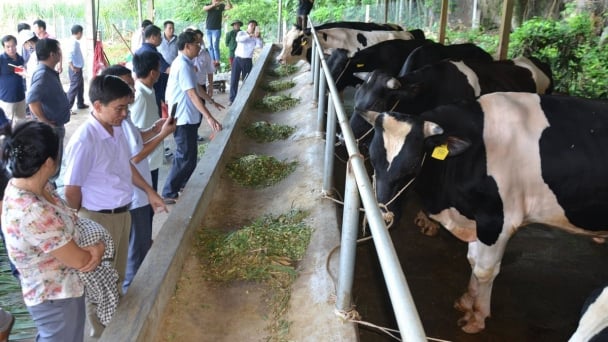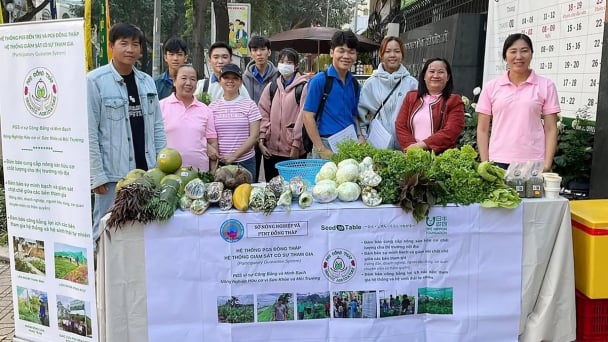May 21, 2025 | 19:21 GMT +7
May 21, 2025 | 19:21 GMT +7
Hotline: 0913.378.918
May 21, 2025 | 19:21 GMT +7
Hotline: 0913.378.918

In essence, the adaptation that makes the crop more growable makes it more dependent on nitrate fertilizers.
That is enhancing their crop's absorption of nitrogen while maintaining the genetic change that allows them to grow in all seasons.
ScienceNews contextualized the findings of a group of researchers in a study published in the New Phytologist journal.The problem the group hopes to address is cutting down on the crop's waste of nitrogen that occurs via excessive use of nitrate fertilizers. Not only is the use of fertilizer expensive for farmers, it can be damaging to the planet when rainfall causes it to pollute the soil, air, and water.
When the potato crop was taken from its native area in the Andes to Europe in the 1500s, it slowly adapted. In the Andes, winter was when the plant grew its tubers, per ScienceNews. Europe's harsher winters initially prevented the crop from taking off.
A genetic mutation in the gene StCDF1 eventually allowed the plant to grow in all seasons and become a global staple. However, the researchers in the study discovered that StCDF1 also strongly restricts an enzyme that facilitates the crop's nitrogen absorption.
In essence, the adaptation that makes the crop more growable makes it more dependent on nitrate fertilizers.
Salome Prat told ScienceNews the crop's poor nitrogen assimilation was a "problem," and noted "when it rains, this excess fertilizer goes to groundwaters, polluting them." That can be deadly for local fish.
To address the issue, the scientists tested if they could disable the StCDF1 gene to produce potatoes in an extremely low-nitrogen environment. While their potatoes didn't produce tubers, they grew bigger leaves and longer roots than conventional potato plants. They "looked happy," project researcher Maroof Ahmed Shaikh told ScienceNews.
That breakthrough opens up the possibility of using gene-editing to create a StCDF1-resistant enzyme that can absorb nitrogen at a much higher rate. The team conducted successful experiments demonstrating it is theoretically possible, calling it "a promising strategy."
Breeding potatoes with natural varieties that are less suppressed by StCDF1 is another potential solution.
The team's encouraging results are part of a concerted effort from scientists globally to cut down on nitrate fertilizer use.
Recently, a team at the University of Sheffield found rock dust can increase crop yields by up to 15%. Researchers at the University of Texas explored using a copper-based hydrogel that can help capture excess nitrogen. Meanwhile, other scientists are looking to optimize fertilizer production by using less synthetic ammonia that contributes to the warming of the planet.
Stephan Pollmann, a plant biologist not involved in the study, called the team's findings a "smasher" in comments to ScienceNews.
"If you can improve the nitrate assimilation … this is super important," he concluded.
(TCD)

(VAN) At the conference to disseminate Resolution No. 68, AgriS introduced its digital agricultural ecosystem and reaffirmed its commitment to accompanying the Government in promoting private sector development and sustainable agriculture.

(VAN) 'Blue Ocean - Blue Foods' initiative is designed to restore marine ecosystems and establish sustainable livelihoods for local communities by cultivating a minimum of 1,000 hectares of cottonii seaweed in the first three years.
/2025/05/21/4642-3-112707_603.jpg)
(VAN) The V-SCOPE project has made direct contributions to three out of six pillars of the Comprehensive Strategic Partnership between Vietnam and Australia.

(VAN) Facing the threat of rabies spreading to the community, Gia Lai province urgently carries out measures to vaccinate dogs and cats on a large scale.

(VAN) Disease-free livestock farming not only protects livestock herds but also stabilizes production and livelihoods for many farmers in Tuyen Quang.

(VAN) Japan's grant aid project contributes to capacity building, promoting organic agricultural production, and fostering sustainable community development in Dong Thap province.

(VAN) For years, the CRISPR-Cas9 genome technology has been reshaping genetic engineering, a precision tool to transform everything from agriculture to medicine.